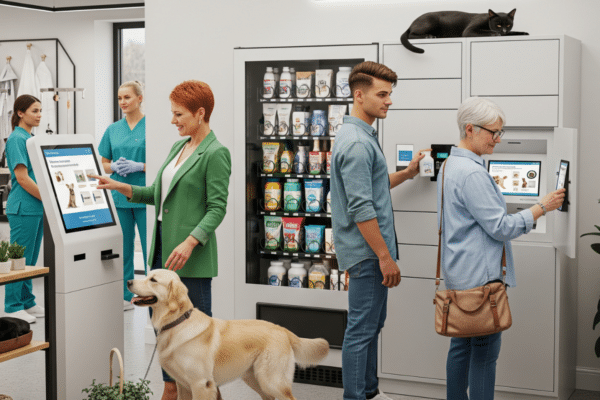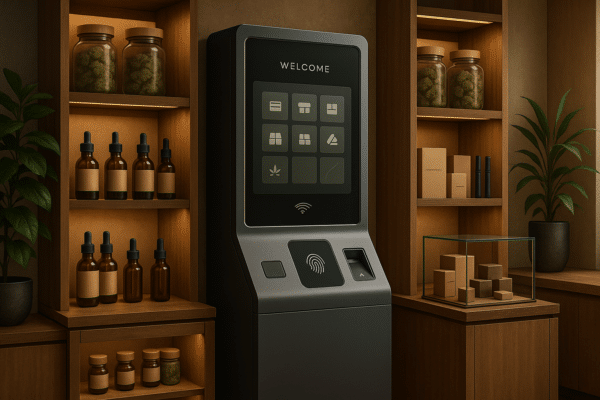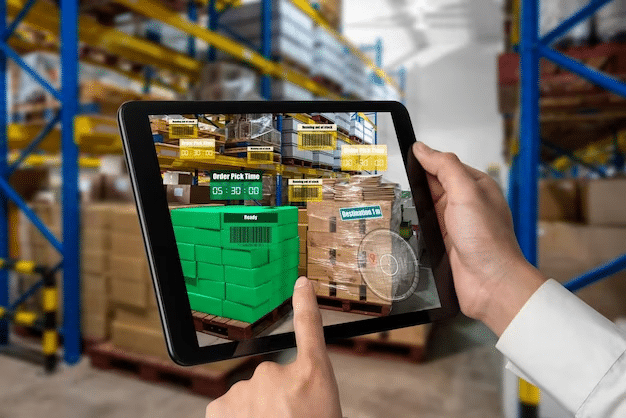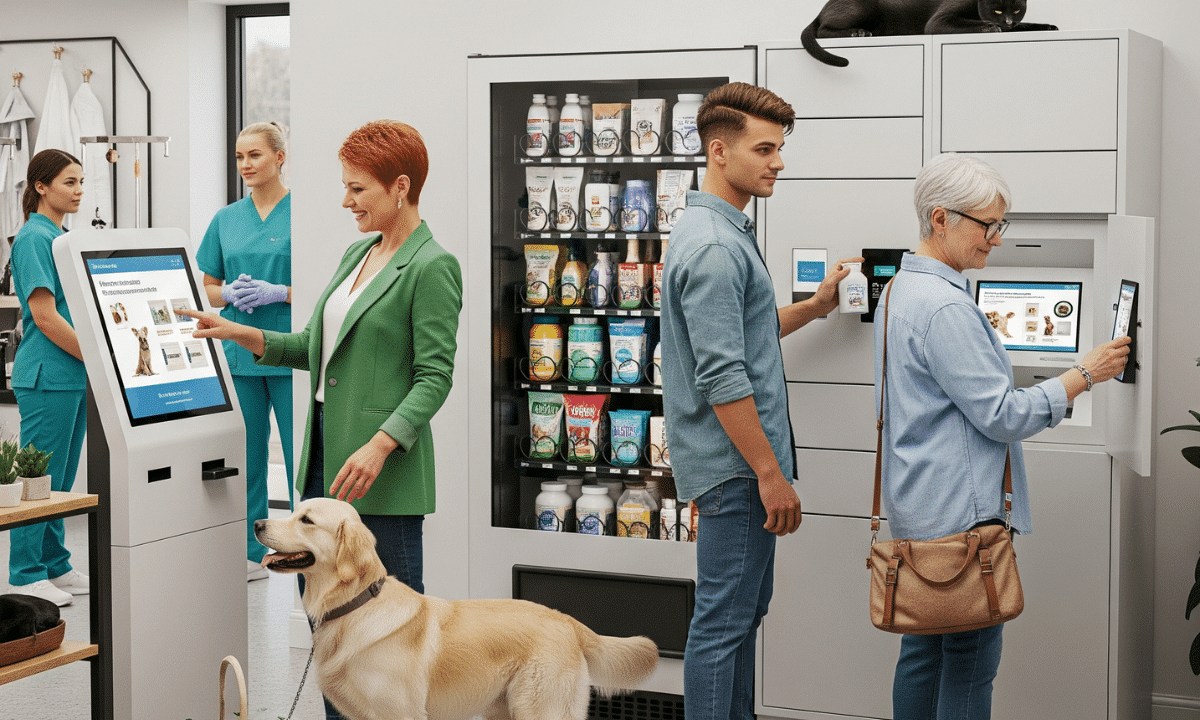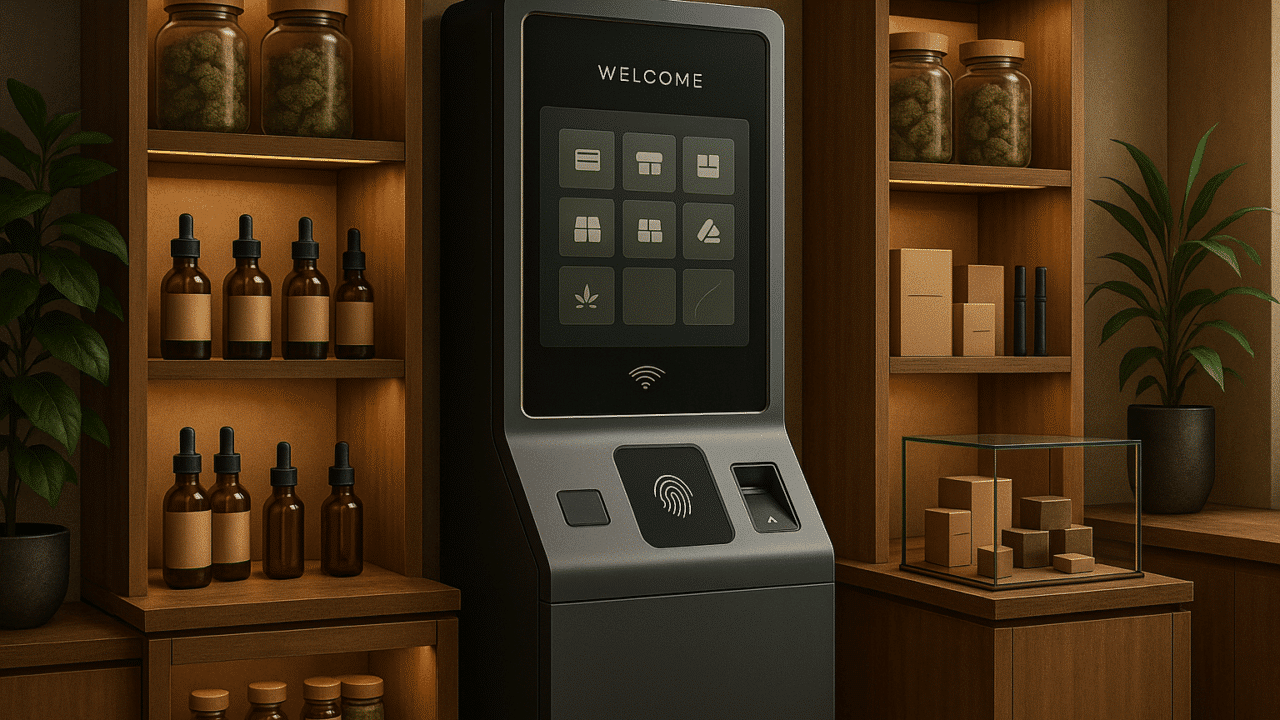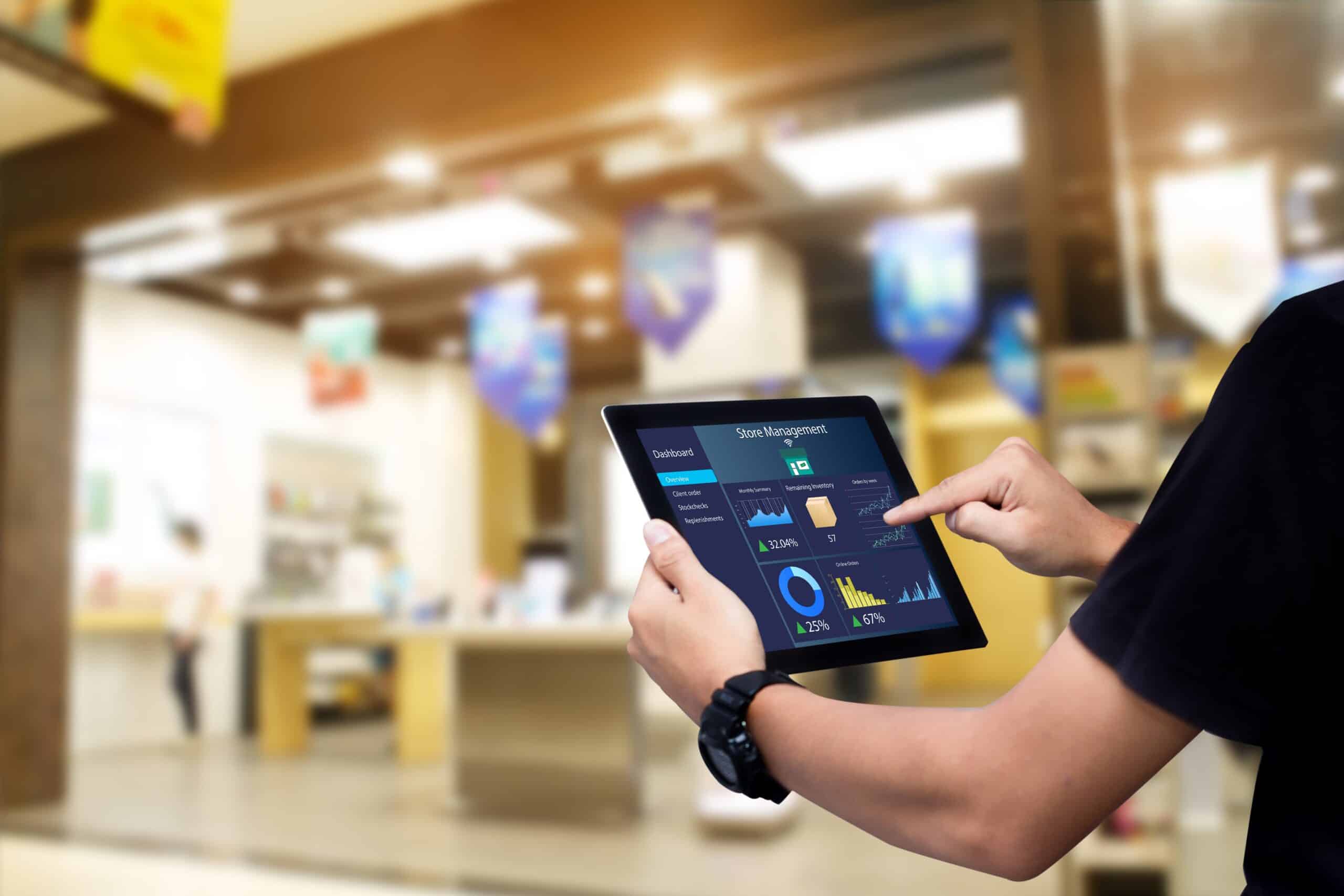
Everything You Need to Know About In-Store Analytics
Real-time data analytics are transforming the way brands and retailers do business by providing actionable insights that inform more confident and far more impactful business decisions. Once positioned as a competitive advantage, retail analytics has exploded to become a do-or-die component for any retail business.
In-store analytics deliver key data points that keep businesses ahead of the curve. Without this intelligence, there’s almost no way to keep up in a retail universe that is evolving faster than ever before with new omnichannel requirements, far more demanding and savvy customers, a host of new inventory and fulfillment challenges, and a new emphasis on the need for flexible and immediate merchandising strategies within physical stores.
So, what is in-store analytics?
In-store analytics is the process of capturing and compiling data in real time and drilling that data down into meaningful insights that can be used to improve performance in every area of retail – customer experience, store operations, inventory management – you name it. Essentially, in-store analytics tell brand and retailers what’s going on performance wise in a store, including what products are selling, when foot traffic is peak and when it’s slow, conversion rates, merchandising compliance, even store cleanliness and appearance with advanced real-time photo capture
Additionally, retail analytics is being used to link brick-and-mortar sales with online sales, an absolute must in today’s omnichannel world. By understanding customer preferences – how, when, and why they are shopping – businesses are able to deliver a consistent customer journey across all channels and that is paramount to any retail business that wants to win immediate sales, build customer loyalty, and drive revenue over the short and long terms.
How do in-store analytics work?
Retail is an industry that is full of valuable information and intelligence. The big problem is that many retail businesses don’t know how to properly capture these data points and turn them into actionable insights. In-store analytics software solutions, like those from The Revenue Optimization Companies (T-ROC) combine advanced proprietary software and mobile devices to capture, compile, and report critical store data in real time. Interpreting data is made easy through customized reporting available to retail managers and other decision-makers anytime via computers, smartphones, and mobile devices. These customized reports are built around targeted KPIs dictated by the client with guidance from the retail experts at T-ROC. Why targeted KPIs? Because a valuable in-store analytics solution is not necessarily about capturing volumes of data. A good solution captures only relevant data, intel that is directly related to business performance. Too much data can lead to a log jam of confusion. The right data, on the other hand, leads to actionable insights.
So, how do in-store analytics work? They work by giving businesses a level of visibility and transparency into their stores that was never available to the retailers of the past. This has changed the game in the industry and will only become a more valuable component of retail success going forward.
10 key benefits of in-store analytics
The more a business knows about its operations, its stores, and customer behavior, the more effective it can be at selling. This is simply logical. But retail analytics improve business performance and drive retail sales in so many ways that it’s worth examining a few of the specific reasons brands and retailers are relying on in-store analytics. Here are 10 key advantages retail analytics can bring to your business:
1. Faster, Smarter, More Informed Decisions
Retail analytics and the actionable insights they deliver happen in real time (when you have the right solution). This means companies are able to make decisions based on immediate and reliable business intelligence. They can change, pivot, cut back, ramp up, make changes as soon as the time is right and the impact is greatest. Retailers become nimbler and are able to react to market and customer changes as they occur. More informed decisions can deliver dramatic performance increases. In fact, according to T-ROC, in-store analytics have led to some impressive results for their clients.
- 85% increase in sales performance
- 2-3 times faster issue resolution
- 15% increase in store coverage without staffing up
2. Stronger Merchandising
One of the greatest advantages of in-store analytics is the ability to review merchandising compliance and effectiveness in real time. Using advanced software and mobile devices, field teams are able to visit brick-and-mortar stores on a regular basis and instantly capture data points on product sales, product placement and pricing, displays, signage, aisle and shelf space, store flow, store cleanliness, and more. Thanks to this detailed data, retail managers and boardroom executives are able to see and understand merchandising on a day-by-day basis. Are products in the right place? Are they priced correctly? Are shelves full or empty? Are digital signage displays up and running? What products are moving, and which ones are stagnant? Real-time visibility into merchandising gives brands and retailers a glimpse into what customers are experiencing in their stores.
3. Obtain Core Customer Data
Digital data and insights provide more than operational intelligence. They can also provide a deep dive into consumer preferences. For example, retail analytics, such as knowing what products are popular and which ones are not selling, can provide retailers with a road map into what customers desire and what their product mix should be going forward. Additionally, capturing customer data at the point of sale through digital solutions can provide actionable insights into who is buying, where they are buying, and even how they are buying – in stores, online, at events. Knowing this information helps retailers deliver what their consumers desire.
4. Improve The Customer Experience
Ultimately, every retail sale comes down to a simple premise – a retailer has the product or products that a customer wants and provides a convenient and engaging experience by which to purchase it. Retail analytics can provide businesses with unique insight into how well stores and staff are performing when it comes to customer engagement. You might think that in the digital age we live in personalized customer service wouldn’t be as critical as speed and immediacy. If so, it might come as a surprise to you that 75% of shoppers still say they prefer human interactions.
This intel has led companies like T-ROC to develop technology solutions like VIBA, the world’s first virtual omnichannel sales and service solution. VIBA takes customer engagement to the next level and can be deployed in-stores, online and anywhere customers shop through QR codes and weblinks. VIBA answers one of the core challenges retail analytics has been pointing to for years – how do you marry personalized customer service with the immediate gratification of the digital age? VIBA also captures vital customer data with each engagement, allowing brands and retailers to better understand customers, build relationships and improve overall customer satisfaction.
Even old-school data capture solutions, such as mystery shoppers, can provide brands and retailers with deep and actionable insights into how customers experience stores and how well sales and service staff meet their needs. Today’s mystery shoppers have mobile tools at their disposal to quickly log data after they engage store staff for faster and more accurate information that doesn’t get lost before it gets to management.
5. Predict The Future
Predictive analytics can help retailers see what tomorrow holds. These retail analytics actually yield insights into shopping patterns and help identify trends coming down the road. This information can guide the processes retailers use to prepare for upcoming seasons. What products will be hot ticket items? What do shoppers expect in terms of customer engagement? It’s easier to prepare for tomorrow when you have a little heads-up as to what it’s going to bring.
6. Ecommerce performance
By definition, in-store analytics include data and insights compiled about brick-and-mortar spaces. However, today brick-and-mortar is rarely a stand-alone sales channel. All good retail analytics programs also include web analytics, which capture and compile data regarding website traffic, dwell time, conversion rates, whether or not customer service was involved, and other key factors to online sales. Retail is now an omnichannel sales business and web analytics make it far more efficient and effective to link physical and digital channels.
7. Strategic Inventory Management
Speaking of omnichannel, the new age of retail has made tracking and managing inventory a lot more complicated. Digital data and insights give brands and retailers more control over inventory and in-store stock because everything becomes visible in real time. When a business has instant access to data such as stock turn, on-hand stock, and sell-through rates, it makes inventory and product assortment decisions far more strategic.
8. Stronger Promotional And Marketing Programs
Retail analytics give businesses a front row seat into their customers and their buying behaviors. They can glean shopping preferences, brand awareness, favorite products, seasonality, pricing issues (good and bad). The point is, the more you know about your customers, the more effectively you can market to them. Additionally, in-store analytics make it far easier to track the performance of marketing and advertising campaigns, special offers, pricing discounts, cooperative branding, and other promotions. When you know what’s resonating with your target audience, as well as what promos are falling short, it becomes clearer where and how marketing dollars should be spent.
9. Optimize Operational Performance
Retail operations encompasses pretty much everything we’ve discussed in this piece so far. Imagine being able to run all these moving parts more efficiently? Retail analytics go a long way to optimizing staff performance, merchandising, inventory, customer engagement and so much more. Plus, in-store analytics make almost every business decision measurable. This allows brands and retailers to set data-driven targets and see the results of every new program and process change that’s put into motion.
10. Bottom Line Savings
In retail, as in most industries, greater visibility into operations almost always leads to substantial cost savings. In-store analytics, if nothing else, are an opportunity for businesses to see what is working and what is not across their retail operations – people, products, sales channels, pricing, merchandising, technology – you name it. Retail analytics provide a level of transparency into these core areas that allow businesses to fix what’s broken, ditch what’s hopeless, add where needed, and optimize what is already doing a great job driving sales and revenue. At the end of the day, in-store analytics when done right is an investment that pays for itself in performance increases.
FAQs
How is analytics used in retail?
In-store analytics work by giving brands and retailers a more comprehensive understanding of their own operations, as well as allowing them to tap into the mindset of their customers. Today’s real-time data capture software platforms provide businesses with incredible visibility into their retail stores, staff, products, merchandising and inventory. Plus, retail analytics provide detailed information about consumer preferences and shopping behaviors, allowing companies to better meet their customer’s needs and wants.
What are examples of analytics used in retail sales?
Let’s look at a possible scenario where in-store analytics might play a major role in retail success. Imagine a brand has launched a 20% off promo for a certain product expecting a jump in sales, but real-time retail analytics quickly reveal that jump is not happening. Why? Field teams are immediately sent into stores with advanced analytics software and reveal the problem. In many locations, promotional signage is not positioned correctly. Displays are not in the high-traffic alleys they were to be placed. Product has not made its way from storerooms to shelves. These missteps are captured immediately thanks to real-time retail analytics and that means the problem can be fixed ASAP.
What is a store analysis?
A store analysis is an examination of a location’s sales, service and operational performance based upon certain metrics defined by the retailer. These often include product mix, conversion rates, customer service levels, merchandising compliance, store cleanliness and appearance, high and low traffic periods, inventory management, and overall revenue generation. In-store analytics provide retailers with real-time and reliable data points that reveal performance across all of these areas, painting a clear picture of a store’s strengths and weaknesses. This intel is used to make calculated business decisions designed to better capitalize on what’s working and rethink or re-tool what is not working.

